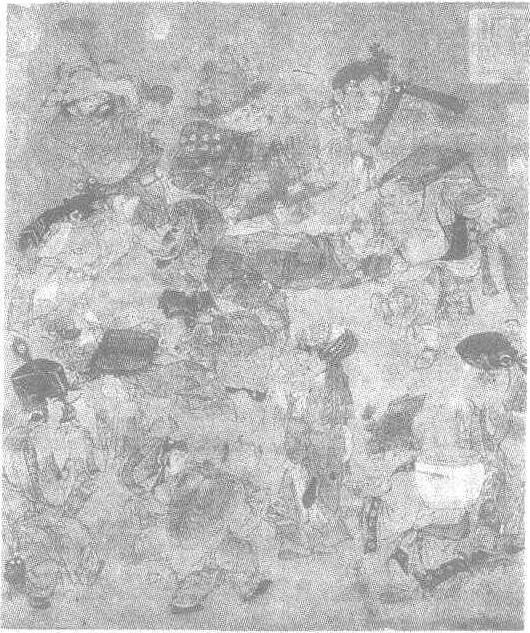宋人大傩图轴
南宋。无款。绢本设色。纵67.4厘米,横59.2厘米。北京故宫博物院藏。这是一幅描写民间驱除厉疫习俗的风俗画。“傩”即指借祭神来驱除厉疫。图中的人物各司其职,有戴假面具的、有拿法器的、有击鼓的,手舞足蹈,相貌奇古,举止怪诞,反映出现实中的人们对厉疫的恐惧,以及借助这种神的力量驱除厉疫的强烈愿望,此图构图新奇,衣纹细致,人物夸张,栩栩如生。设色妍美富丽,不仅具有很高的艺术价值,而且为研究宋代民间习俗提供了生动的形象资料。

| 词条 | 宋人大傩图轴 |
| 类别 | 中文百科知识 |
| 释义 | 宋人大傩图轴南宋。无款。绢本设色。纵67.4厘米,横59.2厘米。北京故宫博物院藏。这是一幅描写民间驱除厉疫习俗的风俗画。“傩”即指借祭神来驱除厉疫。图中的人物各司其职,有戴假面具的、有拿法器的、有击鼓的,手舞足蹈,相貌奇古,举止怪诞,反映出现实中的人们对厉疫的恐惧,以及借助这种神的力量驱除厉疫的强烈愿望,此图构图新奇,衣纹细致,人物夸张,栩栩如生。设色妍美富丽,不仅具有很高的艺术价值,而且为研究宋代民间习俗提供了生动的形象资料。
|
| 随便看 |
开放百科全书收录579518条英语、德语、日语等多语种百科知识,基本涵盖了大多数领域的百科知识,是一部内容自由、开放的电子版国际百科全书。